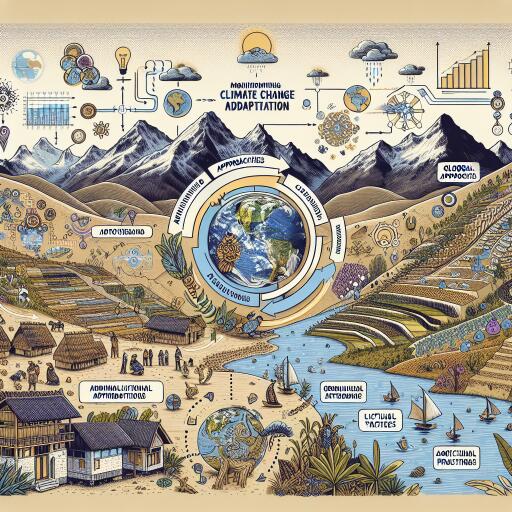
Localizing Global Climate Change Adaptation Monitoring and Evaluation: Insights from the Andes
In addressing the impacts of climate change, the necessity for effective monitoring and evaluation (M&E) methods is paramount, particularly in the context of adaptation strategies. The complex nature of climate change, coupled with the diverse socio-economic landscapes across the globe, calls for an approach to M&E that is both sophisticated and sensitive to local realities. This article explores how global approaches to M&E of climate change adaptation are being adapted and applied within the unique environmental and cultural settings of the Andean region.
Global Approaches to M&E of Climate Change Adaptation
Three primary approaches have been identified in the global discourse on climate change adaptation M&E. These include M&E frameworks centered around internationally funded projects, those based on national public policies, and participatory M&E strategies emerging from local communities.
Internationally funded project-based M&E often leverages Ecosystem-based Adaptation (EbA) and Nature-based Solutions (NbS) methodologies, aiming at fulfilling donors’ requirements while facilitating macro-level analysis across different regions. This model predominantly employs quantitative methods and universal indicators for broad-scale impact assessment.
Conversely, the approach founded on national public policies is usually designed to align with a country’s commitments to international climate goals. It integrates both universal and context-specific indicators, employing mixed methods to capture quantitative and qualitative data alike. This strategy emphasizes adaptive management, seeking to continuously refine M&E practices in response to the dynamic nature of climate impacts.
Lastly, the participatory M&E approach is deeply rooted in the local context, engaging directly with communities affected by climate change. This model is highly flexible, employing contextually relevant indicators developed through participatory methods. Its primary objective is to engender transformative change at the local level by enhancing communities’ adaptive capacities and reshaping societal practices and perceptions regarding climate resilience.
Localizing M&E Strategies in the Andean Context
The application of these global M&E frameworks within the Andean nations of Bolivia, Colombia, Ecuador, and Peru underscores the processes of adaptation that tailor these strategies to local needs and realities.
Colombia’s foray into developing a national M&E system for climate change adaptation shines a light on efforts to design locally relevant indicators, particularly for the high Andean ecosystems. This initiative reflects an integrated approach, emphasizing multi-ecosystem and multi-scale perspectives that acknowledge the complexities of mountainous landscapes.
Similarly, Ecuador’s formulation of a National Climate Change Adaptation Plan illustrates a strategic move towards creating an M&E framework that supports water sector management amidst climatic changes. Participatory methods and a cross-sectoral approach signify the country’s commitment to incorporating local realities into national adaptation strategies.
In Peru, the progress is evident in the establishment of a monitoring system for adaptation and mitigation measures, particularly within the agricultural sector. This effort demonstrates a focused application of M&E to enhance adaptive capacities in vital areas of family farming and water resource management, especially given Peru’s vulnerability to climate phenomena such as El Niño.
Bolivia’s nascent development of a national M&E system depicts a ground-up approach, particularly through the Sustainable Urban Drainage Systems (SUDS) initiative. This project aims at improving urban resilience through better water management practices, tailored to the local context of rapid urbanization and climate vulnerability.
Conclusion
The journey of localizing global climate change adaptation M&E frameworks in the Andean countries is a testament to the dynamic interplay between global methodologies and local realities. By drawing on both universal and context-specific indicators, these nations are pioneering adaptive strategies that are not only responsive to the global climate change narrative but are deeply embedded within their unique socio-ecological contexts. This evolving landscape of climate change adaptation presents a compelling case for the continuous exchange of knowledge and practices between global strategies and local implementations, paving the way for a more resilient future.





Leave a Reply